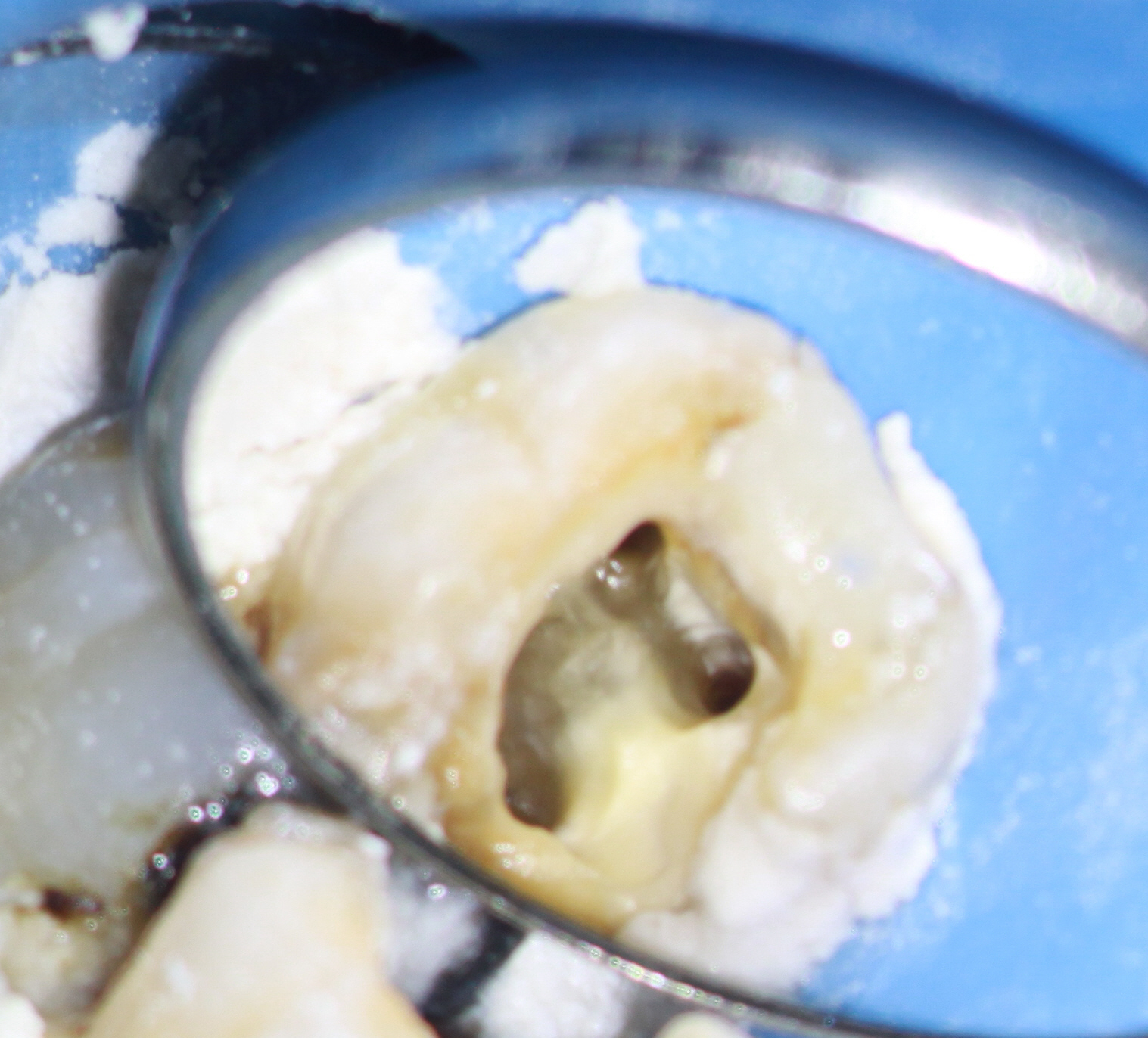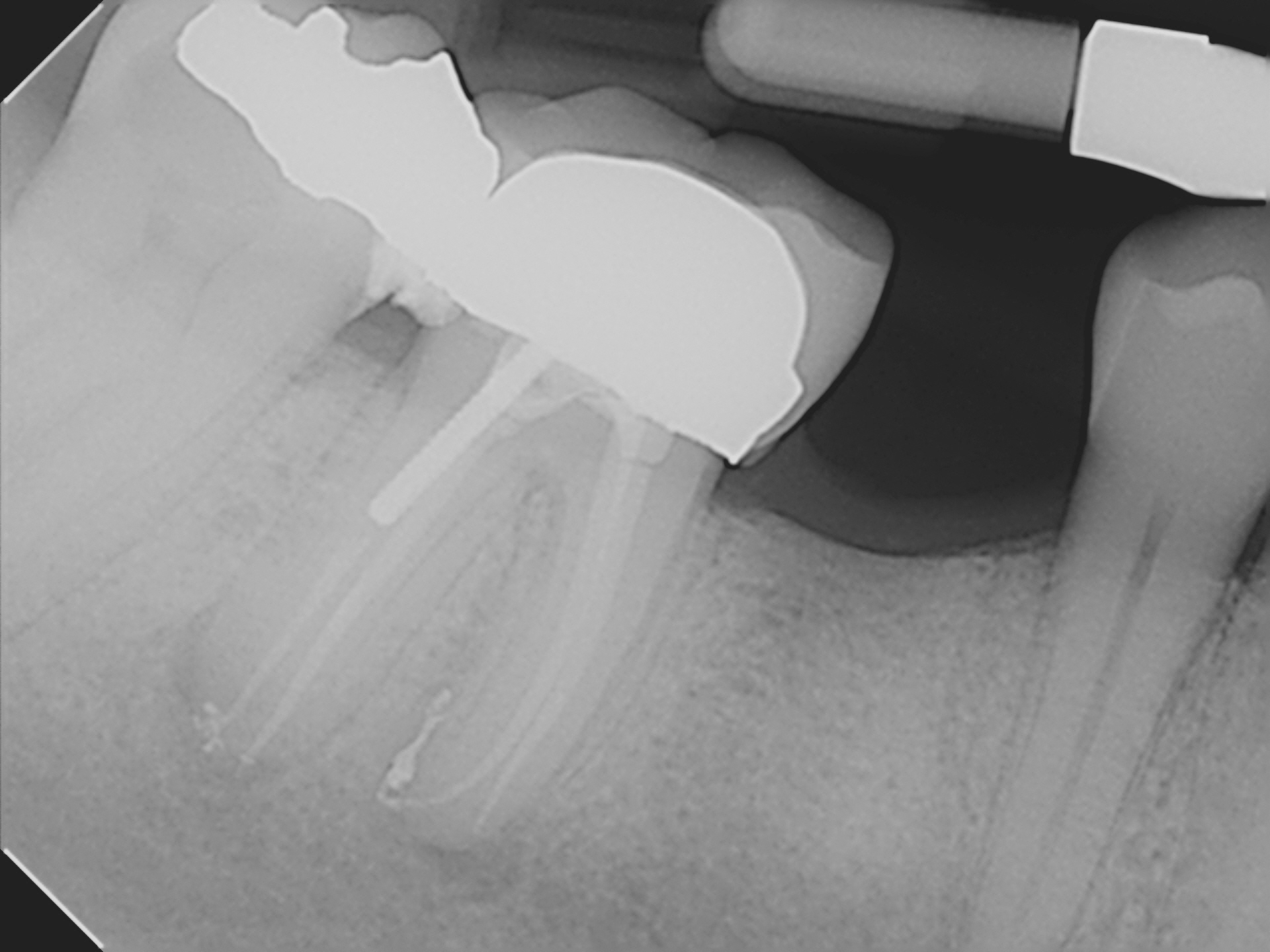BWs After Crowns – A Necessity?
This patient was referred to me for endodontic treatment of a mandibular right first molar. The tooth had been restored with a composite restoration which had broken on the distal aspect . This resulted in carious exposure and patient symptoms.


Clinical examination revealed positive responses to percussion and palpation and gross carious exposure of the distal pulp horns . Radiographic examination showed radiolucent findings at both apices. Pulp tests were non responsive. A diagnosis of chronic periapical periodontitis was made secondary to pulpal necrosis.
Endodontic treatment was initiated and I was very satisfied with the treatment results. The patient was immediately going over to the referrals office for core/temp crown restoration. The referring Doctor had requested a post space.






Six months later, the patient was seen for normal six month follow up to check for periapical healing. While the tooth itself had become asymptomatic, and the periapical areas were healing nicely, the patient told me that they were having difficulty flossing on the distal aspect of the tooth and that the distal gingiva was constantly sore.
Periapical radiography showed a radio-opacity on the distal aspect of the tooth . A bitewing radiograph clearly showed that cement had been left in this area during the Crown cementation six months previously. A large piece of cement was removed from the interproximal area, relieving the patient’s symptoms .


From this we can see that bitewing radiographs are an important part of assessing the final restoration to ensure not only that the margins have been fully seated but that no cement his present in the interproximal areas that could cause gingival inflammation. Therefore we can say that bitewings are a necessary part of final Crown cementation procedures.
